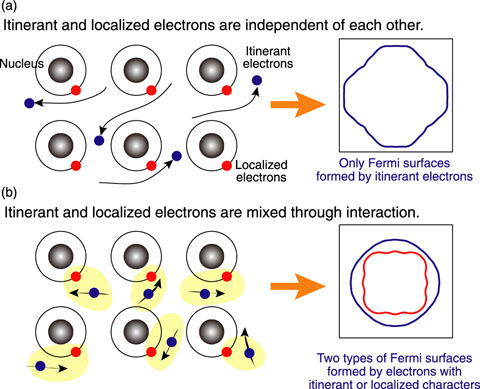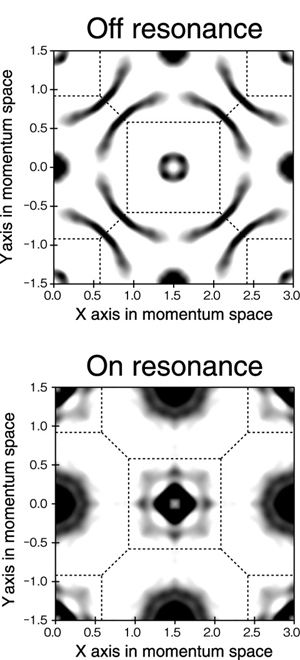
Fig.4-6 Formation of Fermi surfaces (FSs) related to heavy electrons

Fig.4-7 FSs observed by RARPES
Electrons in metals are classified into two types: itinerant electrons, which contribute electrical conductivity, and localized electrons, which contribute magnetism. When the two types of electrons are mixed through strong interaction, heavy electrons are formed, which have an effective mass up to 1000 times the free-electron mass. The nature of heavy electrons is a key to understanding the mechanism of anomalous superconductivity coexisting with magnetism. The Fermi surface (FS), which is derived from the periodicity and symmetry of the crystalline lattice and from the occupation of the electronic energy bands, is useful for predicting the thermal, electrical, magnetic, and optical properties of metals. Experimental observation of the overall shape of FSs formed by heavy electrons had not been successful yet.
In this study, we succeeded in direct observation of FSs formed by heavy electrons by means of Resonant Angle-Resolved PhotoElectron Spectroscopy (RARPES), which enables us to make electron-orbital-selective measurements, using the JAEA soft X-ray beamline BL23SU at SPring-8. Fig.4-6 illustrates the formation of two types of FSs in a situation in which heavy electrons are formed through a strong hybridization between localized and itinerant electrons. By means of RARPES, we have selectively observed the FSs having itinerant and localized natures, in off-resonance and on-resonance measurements, respectively, as shown in Fig.4-7. In future studies, RARES will clarify the characteristics of FSs in the magnetic order related to superconductivity, which should contribute to progress in understanding the mechanism of superconductivity in heavy electron systems.